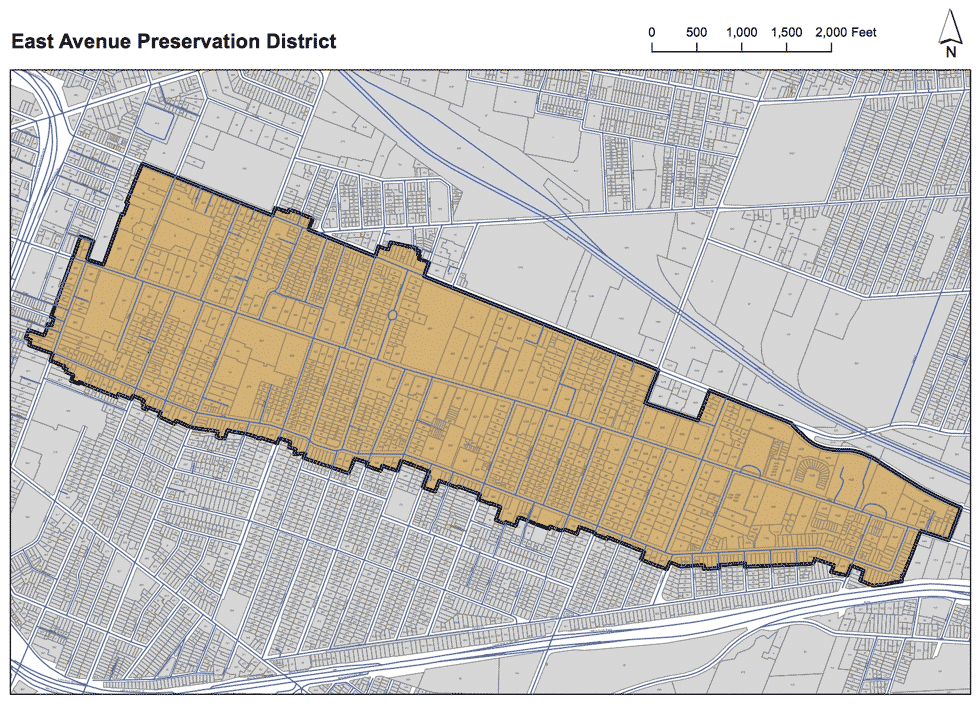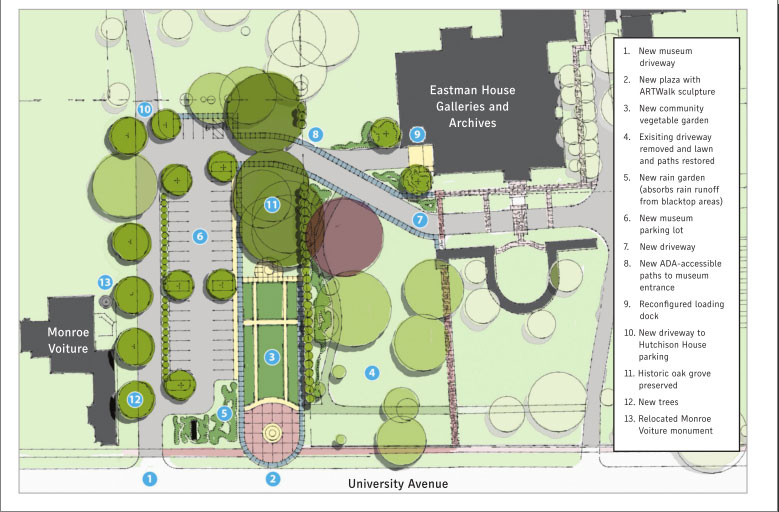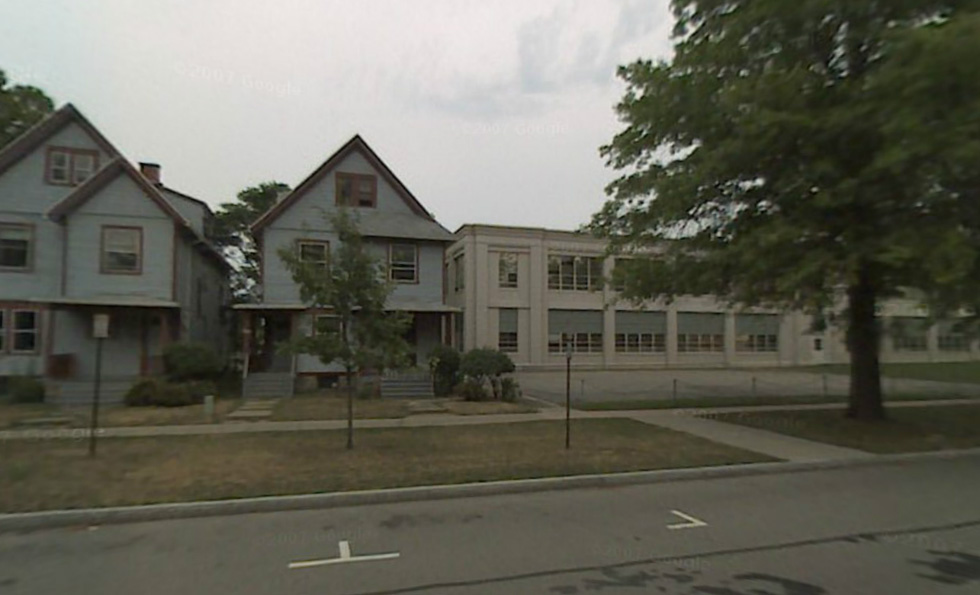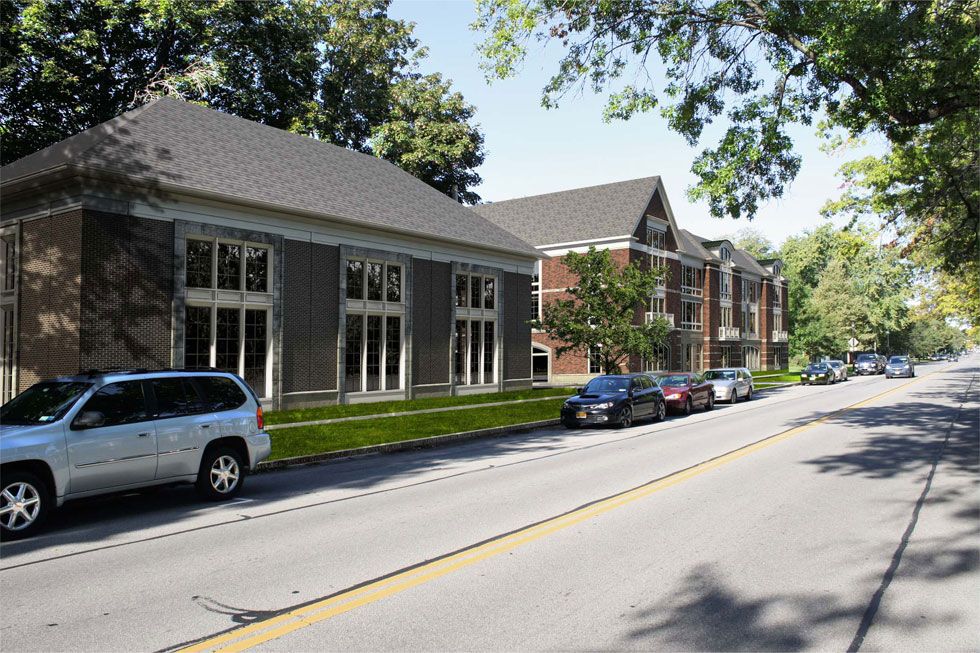This article was scraped from Rochester Subway. This is a blog about Rochester history and urbanism has not been published since 2017. The current owners are now publishing link spam which made me want to preserve this history.. The original article was published May 20, 2013 and can be found here.
![Proposed new development at 933 University Ave. [IMAGE: Morgan Management]](https://senseofplace.dev/content/images/photos/933-university-ave-06.jpg)
The following is a guest post submitted by Matthew Denker .
Submit your story today .
A great deal has already been written about the development planned at 933 University Ave. (see: here

, here

, and here

). Even so, it is important that we take a step back and really think about the kinds of arguments that are being made. Further, let us consider how the neighborhood could benefit from this development, how George Eastman House can meet its needs going forward (and better integrate with Neighborhood of the Arts, as they express a desire to do), and how to move the entire neighborhood towards the increased success it deserves...
![The Monroe Voiture building is located in the East Avenue Preservation District and is the target of a new residential development. [PHOTO: RochesterSubway.com]](https://senseofplace.dev/content/images/photos/933-university-ave-13.jpg)
First, let's get our bearings on what we're really talking about. One of the major bones of contention is that the Monroe Voiture

is located in the East Avenue Preservation District

. Interestingly, the district itself is rarely described, so let's start by taking a look at it.

This piece of Rochester happens to contain a great deal of beautiful architecture, and its protection is incredibly worthwhile. It is also an area of Rochester that is relatively "built out." There are still an egregious number of surface parking lots, but many of the prime spots with street frontage are already taken. Now that we have the neighborhood laid out, let's move on to the arguments being made against 933 University. As I see it, there are five main arguments:
- It damages the view from GEH (or is too close to it).
![The view from George Eastman House. [IMAGE: Morgan Management]](https://senseofplace.dev/content/images/photos/filling-in-933-university-02.jpg)
The "view" from GEH is a rather interesting argument. Saying it makes it sounds as though the property is set above an idyllic lake, and this project is a shipping gantry being erected on its shores. One might be surprised to discover, then, that GEH is currently surrounded by the city of Rochester, is located on a perfectly flat piece of land, and lacks a view of anything other than its own beautifully manicured grounds and enormous temporary automobile storage locations. The biggest fix for GEH views would be to eliminate the parking around the building rather than preventing the construction of this project. The even bigger surprise, then, is that the competing plan by GEH adds 38 parking spaces instead of 100 new neighbors who might visit the museum. This is in addition to the 130 spaces the museum already has. I suppose there's no reason to stop adding parking until all 535 people watching a movie at the Dryden theater can exercise their God given right to drive there alone in a car and park right next to their destination.
- GEH really needs the space!

This is a reasonable argument. It'd be more plausible if their plan actually gave them any exhibition space at all. Instead, it's just more space that will be underutilized by the cars it's so dearly designed to hold. A better idea might be to coordinate with Morgan to actually build additional space for GEH with the new development. In fact, there is good precedent for street-facing retail/commercial space on University, and its omission is one of the major shortcomings of Morgan's design. It could be added with GEH as a tenant for the space. This would increase pedestrian interest in the site, give GEH the sorely needed space they claim to need, and provide the developer with an additional revenue stream. Win win win.
- It's out of scale with the rest of the preservation district (including density, siting, etc.).
![Elevation view of proposed development at 933 University Ave. [IMAGE: Morgan Management]](https://senseofplace.dev/content/images/photos/filling-in-933-university-05.gif)
This argument would hold a great deal of water if the East Avenue Preservation District were comprised exclusively of single-family homes, or brownstones, or some other homogenous architectural style. The very definition of the district contains the line, "Cited as one of the greatest catalogues of 19th and early 20th century urban residential architecture in New York State..." Many large, attractive apartment buildings are contained within the district, buildings such as the Roosevelt, at the corner of Oxford and Park, the Algonquin, on Goodman between Park and East, and University Tower, at the corner of Goodman and University. That last one sets the precedent for something much larger and uglier than anything Morgan is proposing.
- The project is good but in the wrong place.

This argument is troublesome because it is either being said just to be polite, or it's the very definition of NIMBYism. If it's a good project, it's good where it is. If it isn't, it isn't. One of the key things to remember abut real estate is that no two properties are exactly the same. It would be physically impossible. Even two identical houses next to one another are unique due to their locations. The location of a building is inexorably linked to its very existence. Buildings aren't ideas. They are limited by their physicality. Look, you don't need to be for or against a development (or this one), but if you think it's in the wrong place, it is, by definition, not good.
- In the last 40 years, almost nothing has happened in the preservation district, so nothing should happen now.
![The East Ave. Preservation District has remained largely frozen in time for 40 years. Does this mean nothing should ever change? [PHOTO: Albert R. Stone]](https://senseofplace.dev/content/images/photos/george-eastman-house-1932.jpg)
I saved this argument for last because it plays very strongly on 933university.org

(a site that is, despite it's name, ANTI-933 University). There are three different reasons that this argument is poorly structured at best, and downright depressing at worst. The first part is a structural one. The district, when it was formed, was already mostly built out. There are not too many opportunities to build new developments in the district without either building on active parking (woah, hey, I was using that!) or tearing something down (which for the most part, is not desirable). The Monroe Voiture is as close to a natural experiment for redevelopment in the district without someone proposing to replace the 7-11 plaza with a large scale, mixed use development (my educated guess is that such a proposal would be fought tooth and nail). The second part is that very little has happened because the current residents of the district have thoroughly barred the doors to new residents. Every major proposal for the district was, is, and will be fought as though the very houses of current residents were being dismantled to assemble a towering mansion for a serial rapist. Nothing happening for 40 years in a prime neighborhood isn't a natural occurrence. This is a desirable place to be, and there should be development here. This, in turn, is the final part. That little development in the most attractive neighborhood in Rochester is not something to brag about. This neighborhood is part of the reason that the city keeps shrinking. If people can't move to a desirable part of town, they're just not going to move to town at all. This is one of the best places to welcome new friends, new neighbors, and yet, nothing of the sort is happening here. That's what is so sad.
![Another view of the proposed new development at 933 University Ave. [IMAGE: Morgan Management]](https://senseofplace.dev/content/images/photos/933-university-ave-02.jpg)
Ok, so, we've covered the arguments against 933 University. The arguments for it are the kinds of things no one is ever that interested in hearing (increased tax revenues for the city, new neighbors, less driving, more walking). Because of that, what I really want to talk about is how a development such as this, and some of the others in the district (i.e. 759 Park Ave.


) could be designed to more visibly and materially benefit the district. Many of these ideas would work for new developments in the other seven districts in Rochester.
- Required community space. All buildings in the district should have some minimum square footage that must be designated as community space. This space could be programmed at the neighborhood association's discretion.
- Required affordable housing New buildings in preservation districts should have some required set aside for affordable housing. This will help maintain the heterogeneity of our preservation districts.
- Neighborhood Improvement Funds New buildings should have some portion of their budget designated for payment into a district-by-district preservation fund. This fund could then disburse grants to owners in the district based on need. This will allow for the preservation of homes in the district no matter the financial standing of the current resident.
- A special zoning overlay for preservation districts On its own, this wouldn't do much, but in fact, the overlay should be structured such that developments start from a known FAR/unit density and then have a series of optional "upgrades." These "upgrades" to the project would have a known formula for the number of units/additional FAR that would be afforded to the project. For example, increasing the number of affordable units from 10% to 20% allows for 10% more units. This would be in addition to any aesthetic evaluation by preservationists, but it would allow for a repeatable and explainable number of apartments in each development in a district.
No compromise is easy, but we should be working towards a system that allows for developers and communities to fill perceived needs. Stopping 933 University on shaky preservation grounds won't do that, but working towards a better-defined system of development in preservation districts will. Let's take this opportunity to do it once and for all.
Related
Don't forget this free event, Public Forum: Development in Preservation Districts . Tuesday, 7pm at 597 East Avenue.
* * *
About Matthew Denker:
Matthew Denker is a Project Director by day and a fantasy real estate tycoon by night. He has a deep interest in Rochester, NY, as well as the subjects of new urbanism, walkability, mass transit, and land use. Going forward he hopes to combine all of those things to make Rochester a city competitive not only with other small, successful cities, such as Portland and Minneapolis, but even better by leveraging its easy access to the world-class cities of Toronto and New York.


